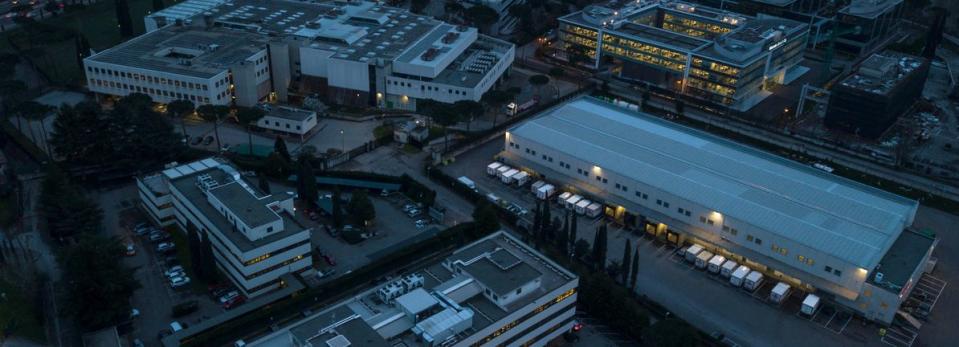How Does Carlisle Companies Incorporated (NYSE:CSL) Stand Up To These Simple Dividend Safety Checks?

Dividend paying stocks like Carlisle Companies Incorporated (NYSE:CSL) tend to be popular with investors, and for good reason - some research suggests a significant amount of all stock market returns come from reinvested dividends. On the other hand, investors have been known to buy a stock because of its yield, and then lose money if the company's dividend doesn't live up to expectations.
A 1.3% yield is nothing to get excited about, but investors probably think the long payment history suggests Carlisle Companies has some staying power. The company also returned around 4.2% of its market capitalisation to shareholders in the form of stock buybacks over the past year. Before you buy any stock for its dividend however, you should always remember Warren Buffett's two rules: 1) Don't lose money, and 2) Remember rule #1. We'll run through some checks below to help with this.
Click the interactive chart for our full dividend analysis
Payout ratios
Dividends are typically paid from company earnings. If a company pays more in dividends than it earned, then the dividend might become unsustainable - hardly an ideal situation. As a result, we should always investigate whether a company can afford its dividend, measured as a percentage of a company's net income after tax. Carlisle Companies paid out 21% of its profit as dividends, over the trailing twelve month period. We'd say its dividends are thoroughly covered by earnings.
We also measure dividends paid against a company's levered free cash flow, to see if enough cash was generated to cover the dividend. Carlisle Companies's cash payout ratio last year was 15%, which is quite low and suggests that the dividend was thoroughly covered by cash flow. It's positive to see that Carlisle Companies's dividend is covered by both profits and cash flow, since this is generally a sign that the dividend is sustainable, and a lower payout ratio usually suggests a greater margin of safety before the dividend gets cut.
Consider getting our latest analysis on Carlisle Companies's financial position here.
Dividend Volatility
From the perspective of an income investor who wants to earn dividends for many years, there is not much point buying a stock if its dividend is regularly cut or is not reliable. Carlisle Companies has been paying dividends for a long time, but for the purpose of this analysis, we only examine the past 10 years of payments. During this period the dividend has been stable, which could imply the business could have relatively consistent earnings power. During the past ten-year period, the first annual payment was US$0.62 in 2010, compared to US$2.00 last year. This works out to be a compound annual growth rate (CAGR) of approximately 12% a year over that time.
It's rare to find a company that has grown its dividends rapidly over ten years and not had any notable cuts, but Carlisle Companies has done it, which we really like.
Dividend Growth Potential
While dividend payments have been relatively reliable, it would also be nice if earnings per share (EPS) were growing, as this is essential to maintaining the dividend's purchasing power over the long term. Strong earnings per share (EPS) growth might encourage our interest in the company despite fluctuating dividends, which is why it's great to see Carlisle Companies has grown its earnings per share at 17% per annum over the past five years. Earnings per share are growing at a solid clip, and the payout ratio is low. We think this is an ideal combination in a dividend stock.
Conclusion
To summarise, shareholders should always check that Carlisle Companies's dividends are affordable, that its dividend payments are relatively stable, and that it has decent prospects for growing its earnings and dividend. Firstly, we like that Carlisle Companies has low and conservative payout ratios. We like that it has been delivering solid improvement in its earnings per share, and relatively consistent dividend payments. All these things considered, we think this organisation has a lot going for it from a dividend perspective.
Companies that are growing earnings tend to be the best dividend stocks over the long term. See what the 7 analysts we track are forecasting for Carlisle Companies for free with public analyst estimates for the company.
Looking for more high-yielding dividend ideas? Try our curated list of dividend stocks with a yield above 3%.
If you spot an error that warrants correction, please contact the editor at editorial-team@simplywallst.com. This article by Simply Wall St is general in nature. It does not constitute a recommendation to buy or sell any stock, and does not take account of your objectives, or your financial situation. Simply Wall St has no position in the stocks mentioned.
We aim to bring you long-term focused research analysis driven by fundamental data. Note that our analysis may not factor in the latest price-sensitive company announcements or qualitative material. Thank you for reading.

